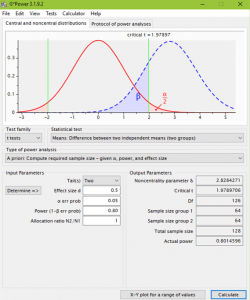Take the Guesswork Out of Sample Size: Why and How to Conduct a Power Analysis
So, you have a developed research idea. You have a plan on what to study, how to study it, and the population to use to study it. Why cross your fingers and hope for statistical significance? When you can do your best to plan for that as well?
The power of your study is the probability. You will find a significant difference or relationship if a difference or relationship truly exists in the population. Even if your null hypothesis is indeed false, if your study is underpowered, you will not find significant results. In other words, you will have a false-negative result, also known as a Type II error. Some factors that will affect the power of your study. That include sample size, significance level (α), effect size, and the type of statistical analysis you plan to conduct.
The best way to increase your study’s power is to increase your sample size. However, resist increasing your sample size beyond what your power analysis. This indicates, as that will increase the risk of finding a false-positive result, also known as a Type I error. Luckily, if you plan ahead, you can ensure you will achieve sufficient power for your study.
There are several types of power analyses, but the two most applicable are the a priori and post hoc. A priori analyses are performed as part of the research planning process. They allow you to determine the sample size you need in order to reach a desired level of power.
Need assistance with your research?
Schedule a time to speak with an expert using the link below.
Post hoc analyses are performed after your study has been conducted, and can be used to assist in explaining any potential non-significant results.
If you know your desired effect size (i.e., small, medium, or large), your desired significance level (α = .05 or α = .01), and the type of statistical test you will be conducting, you can calculate the minimum number of participants required to achieve a sufficient level of power (typically .80 in social science research). The most convenient way to calculate power is to use power analysis software such as G*Power. Using G*Power, there are no complicated tables to follow or any formulas to work through. In G*Power, you can select your “test family” (e.g., t tests, F tests), the type of power analysis (i.e., a priori), and the input parameters (i.e., tails(s), effect size, power, etc.), and hit calculate. The software will do the calculation for you, and will give you a variety of output parameters, the most relevant being the target sample size.
The screenshot below presents an example of a G*Power calculation using an independent samples t-test with two tails, a medium effect size, and a desired power level of .80.

We’ve used G*Power to calculate sample size for the most common statistical tests and written it up for small, medium, and large effect). Learn more here.

If you’re like others, you’ve invested a lot of time and money developing your dissertation or project research. Finish strong by learning how our dissertation specialists support your efforts to cross the finish line.
